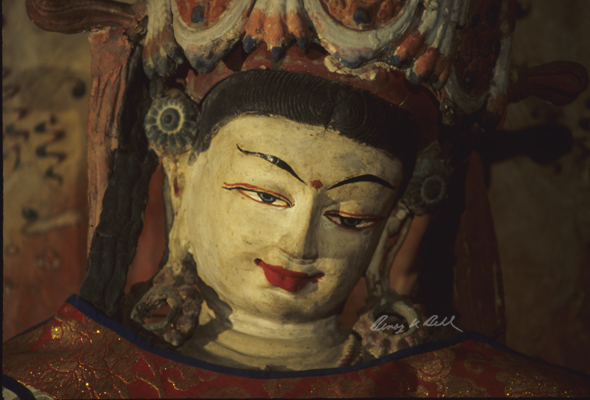Beyond the self

Bodhisattva Vajralasya, personification of grace, Tabo Monastery, 11th cent.
Benoy K Behl
For the sculptor in ancient India, the grace of divinity is everywhere. The stone before him contains the image of divinity and it is for him to but remove the outward aspects and to reveal that form. The process of making an image is not only a personal joy of discovery and creation, it is also one of sharing the grace inherent in all the world, with others.
As the ego and belief in one’s identity is considered to be an illusion of our limited sensibilities, the focus was never on the individual. For about a thousand years in early times, up till the seventh century CE, vast quantities of art were produced in India. This depicted deities, mythical creatures, animals, plants, trees, forms which combined these beings in a great harmony, and also common men and women.
Yet this art never depicted any personalities, not even of the kings under whose rule the works were created. Nor was the name of the artist mentioned. According to the Chitrasutra, personalities are too unimportant to be depicted in art. The purpose of art is a noble one, to show the eternal, beyond the ephemeral forms of the world.
Through all the present troubled times, it may serve us well to take benefit of images of this ancient art. These remind us of the grace of the eternal, which is ever present, despite all the challenges around us.

